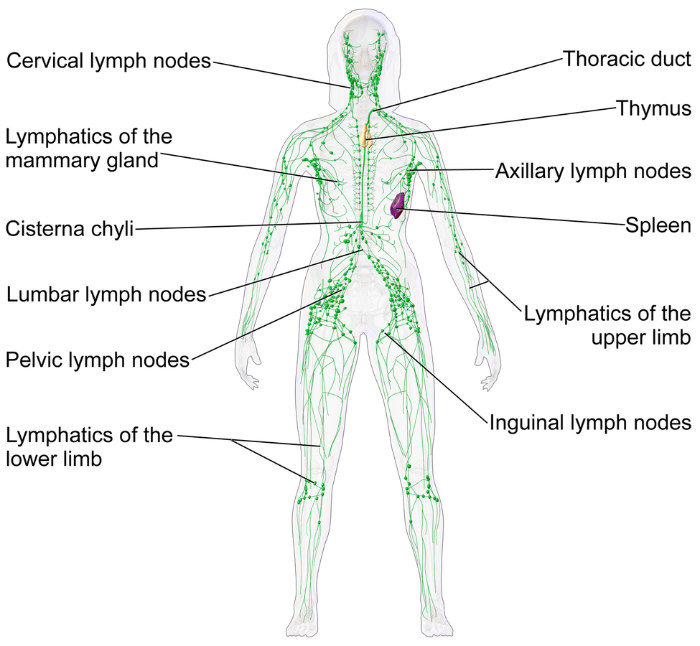Who Can Benefit From Lymphatic Drainage Massage?
You probably heard about lymphatic massage,
also called lymphatic drainage massage. You're likely also familiar
with the lymphatic system. It is part of our immune system, and in this
article, we're going to learn all about it. We'll explain how it works
to defend us, what happens when it fails, and how manual drainage can
help restart it. You may even discover that you can benefit from a
lymphatic drainage massage!
What is a lymphatic drainage massage?


The lymphatic system
To fully understand what a lymphatic drainage massage is, we must get
acquainted with the lymphatic system itself first. This system is part
of the immune system. It consists of nodes spread all over the body that
are connected by vessels. The fluid flows through the vessels, whereas
the nodes function as filters.
The lymphatic system protects us from infections, as it contains white
blood cells called lymphocytes. It moves fluid from bodily tissues into
the blood. Lastly, it helps get rid of waste produced by the cells. The
fluid and waste are later discarded via the blood circulation through
the liver and kidneys. They then exit the body through bowel movements
and urine.
The entire system lies just under the skin, so when performing a
drainage massage, there's no need to apply much pressure.
The basics of lymphatic drainage massage
A lymphatic drainage massage is usually part of an entire Complete
Decongestive Therapy (CDT) plan. It consists of massage, applying
pressure, exercise, and skincare (if there's damage to the skin).
Compression socks are used to direct lymphatic fluid away from the legs.
The primary beneficiaries of lymphatic drainage are people suffering
from lymphedema. This is a swelling that develops due to a failure of
the lymphatic system. It usually occurs after surgery involving the
lymph nodes, severe infections, or radiation therapy.
Every drainage massage session lasts between 15 and 60 minutes. The
effects are immediate. Applying minimal pressure, your physical
therapist may use just one type of motion or a combination of sweeping
and circular motions. These motions help collect and redirect
accumulated lymphatic fluid and promote its re-absorption by the body.
Every movement is designed to stretch the skin in the direction of
lymphatic flow.
As lymphedema isn't curable yet, is it recommended to keep your legs and
arms above your heart and avoid sitting cross-legged if you suffer from
this condition. Avoid applying ice or heat and resist wearing tight
garments.
Who else can benefit from lymphatic drainage massage and who should avoid it?
Lymphatic drainage massage isn't reserved
only for those who suffer from lymphedema. It could also alleviate
symptoms of the following conditions:
- progressive rheumatoid arthritis
- chronic venous insufficiency (CVI)
- digestive problems
- fatigue
- fibromyalgia
- insomnia
- migraine attacks
- swelling (aka edema)
- skin disorders
- stress and depression
- constipation.
There are virtually zero risks in having a lymphatic drainage massage.
However, certain individuals should avoid it.
These include people who:
- have an infection
- experienced blood clots or a stroke
- have congestive heart failure
- have cancer in the affected area
- have liver or kidney problems.
Can you do it yourself?
After consulting your physician, you can certainly do drainage at home
yourself. It can even help the symptoms of a common cold.